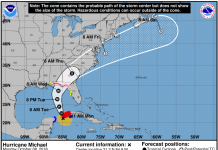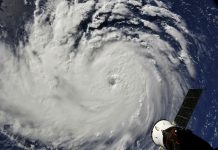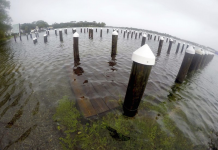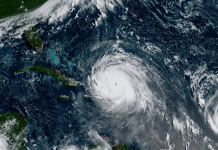For the second time in less than a month, the Caribbean got pounded by a major hurricane. Hurricane Maria slammed the Dominica with “widespread devastation” as a category five.
The storm hit with 160 mph winds and shredded much of the island that has a 73,000 population. Even Dominica’s Prime Minister Roosevelt Skerrit’s house saw significant destruction.
Maria became the strongest hurricane, on record, to make landfall in Dominica and will now look towards Puerto Rico as a potentially category four storm.
The 8 a.m. update showed Maria’s location at 85 miles west of Guadeloupe and 170 miles south of St. Croix.
Forecasters expect the storm to hit the Leeward Islands and the Virgin Islands today before closing in on Puerto Rico early Wednesday morning. A hurricane warning is in effect for Guadeloupe, Dominica, St. Kitts, Nevis, Montserrat, the US and British Virgin Islands, Puerto Rico, Culebra, and Vieques.
Puerto Rico Gov. Ricardo Rosselló declared a state of emergency in anticipation of Maria being the first category four or five hurricane to make landfall on the islands in 85 years. The National Hurricane Center suggested the storm will be catastrophic to Puerto Rico.
This is an extremely dangerous hurricane and life-threatening impacts are anticipated across PR and the Virgin Islands! #prwx #usviwx #Maria pic.twitter.com/bBE1qZW41k
— NWS San Juan (@NWSSanJuan) September 19, 2017
Rosselló said there are 500 shelters available on the island. Puerto Rico is still housing evacuees who fled other Caribbean islands during Irma. Now evacuees and natives are bracing for the impact of Maria.
Hurricane Maria Is Intensifying Quickly Along The Path
On Monday Maria strengthened to a category five storm quickly. The storm went from 65 mph winds on Sunday to 160 mph winds on Monday night, said the National Hurricane Center.
Models still suggest Maria will stay in the Atlantic to turn East just before the Bahamas. The storm is still five to six days out so forecasters continue to monitor the path for any changes are it gets closer to the U.S.














